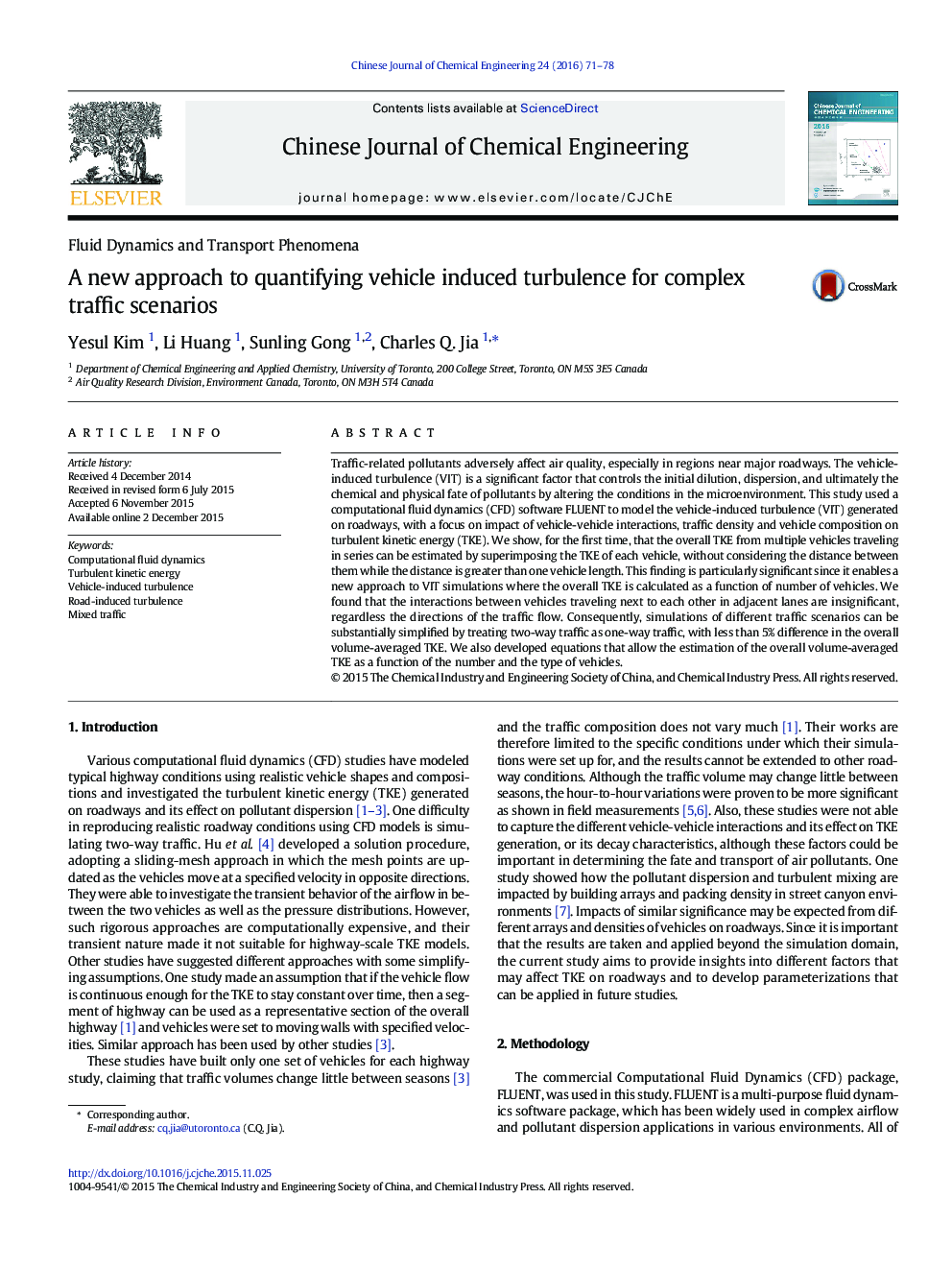| Article ID | Journal | Published Year | Pages | File Type |
|---|---|---|---|---|
| 166891 | Chinese Journal of Chemical Engineering | 2016 | 8 Pages |
Traffic-related pollutants adversely affect air quality, especially in regions near major roadways. The vehicle-induced turbulence (VIT) is a significant factor that controls the initial dilution, dispersion, and ultimately the chemical and physical fate of pollutants by altering the conditions in the microenvironment. This study used a computational fluid dynamics (CFD) software FLUENT to model the vehicle-induced turbulence (VIT) generated on roadways, with a focus on impact of vehicle-vehicle interactions, traffic density and vehicle composition on turbulent kinetic energy (TKE). We show, for the first time, that the overall TKE from multiple vehicles traveling in series can be estimated by superimposing the TKE of each vehicle, without considering the distance between them while the distance is greater than one vehicle length. This finding is particularly significant since it enables a new approach to VIT simulations where the overall TKE is calculated as a function of number of vehicles. We found that the interactions between vehicles traveling next to each other in adjacent lanes are insignificant, regardless the directions of the traffic flow. Consequently, simulations of different traffic scenarios can be substantially simplified by treating two-way traffic as one-way traffic, with less than 5% difference in the overall volume-averaged TKE. We also developed equations that allow the estimation of the overall volume-averaged TKE as a function of the number and the type of vehicles.
